Resource Allocation in Project Management: How to Organize Work Effectively [+ Example]
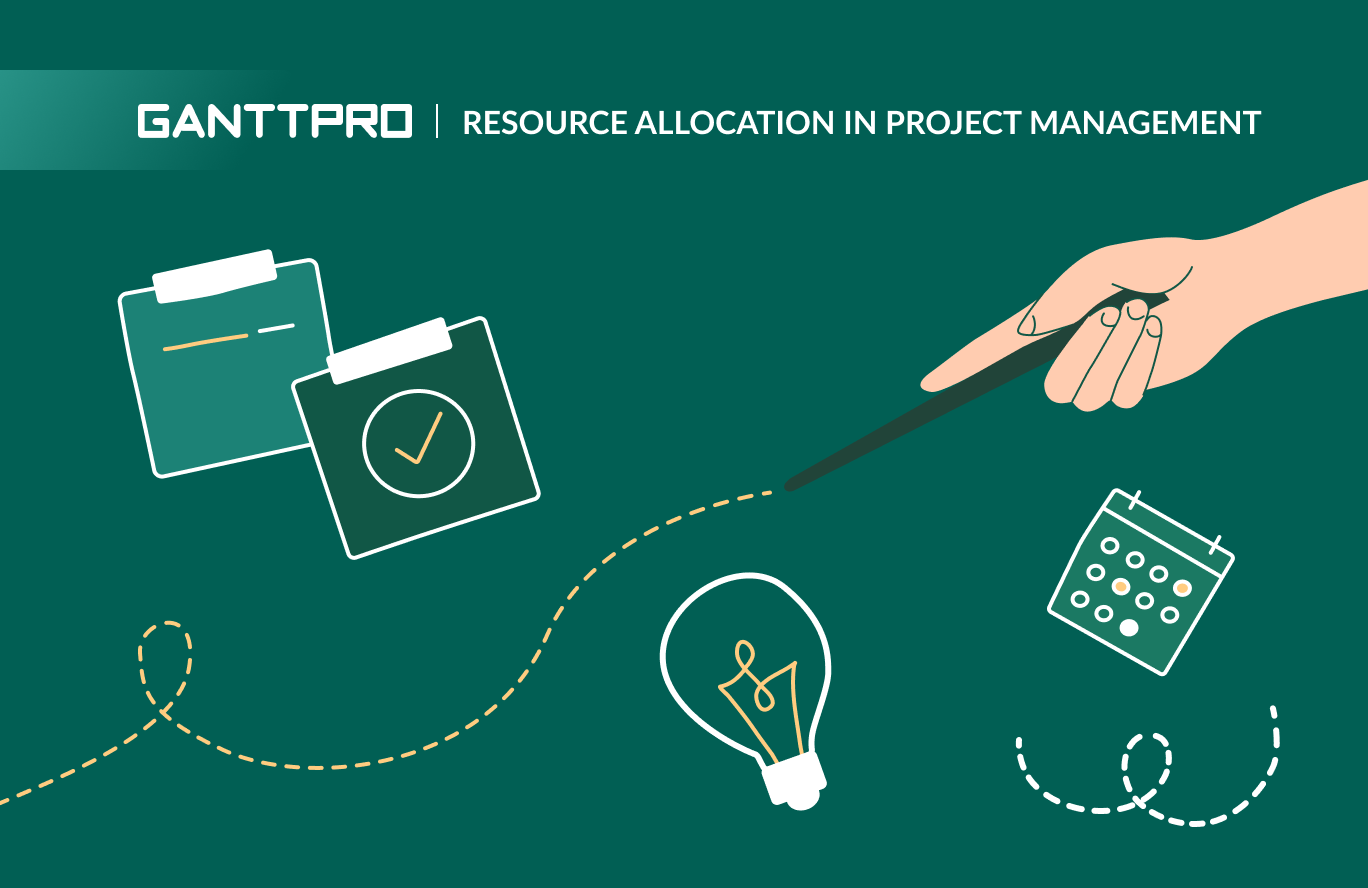
Audio version:
One of the essential components of an effective project management process is resource allocation.
According to LTFE, a training company with educational offerings, it’s one of the top five project management challenges in 2023.
Assigning the right resources to proper activities isn’t as easy as you can think. The process requires preliminary preparation, specific knowledge, and experience. Anyway, professional resource allocation in project management affects successful work realization.
In this article, you’ll learn what resource allocation in project management is, why it’s important, and how it helps improve your workflow. A detailed example implemented with professional PM software will be the icing on the cake.
Let’s dive in.
- What is resource allocation in project management?
- Types of resources.
- What is the purpose of resource allocation?
- Benefits of resource allocation in project management.
- Why is resource allocation in project management important?
- Resource allocation methods.
- What are the challenges of resource allocation?
- How to allocate resources with the help of professional software.
- Resource allocation in project management example.
What is resource allocation in project management?
Resource allocation in project management is the process of assigning and distributing resources to various tasks and activities within a project. The goal of this process is to ensure that the right resources are available at the right time to complete project tasks effectively and manage possible constraints.
It often happens that projects need more resources, but they are not infinite. Precisely that is why it is crucial to manage and delegate resources to avoid scarcity properly.
In other words, the resource allocation definition is based on a simple thing: to ensure that projects operate smoothly and meet all the company’s business objectives on time.
By the way, a poll within a German-language TPG webinar (2023) asked where the participants would like to see AI support in project management. 61% said that it should be resource planning.
Now that you know what is meant by resource allocation, let’s talk about its types.
Types of resources
Globally, project management resources can be human and non-human. They are divided into 5 groups:
- Labor.
- Equipment.
- Facilities.
- Materials.
- Budget.

Let’s have a closer look at each of them.
- Labor. These are various professionals, employees, and team members with different skills needed to complete a project successfully. These people make any plan’s backbone.
- Equipment. It includes necessary tools for project completion: from software or hardware to hammer or drill, depending on a company’s specifics.
- Facilities. It is all about an environment for work and project realization such as offices, open spaces, meeting rooms, etc.
- Materials. In other words, it is the stuff needed to produce outputs: from pens and paper to raw materials for house building.
- Budget. Probably, the most important type that allows buying all we listed above.
What is the purpose of resource allocation?
It is difficult to overestimate the importance of resource allocation and leveling in project management. It affects all working processes and helps you avoid missed deadlines and meet business objectives.
Let us make it more clear. Every project consists of tasks. If one of them is completed with a delay, there is a high probability that the entire project will be completed with a delay. And one of the main reasons for missed deadlines is the lack of resources because of its inappropriate allocation.
So, what is the importance of resource allocation? Its main goal boils down to reaching the best results paying the lowest cost. So, constant optimization is the necessary thing while running these processes.
When you know what it takes to make a project successful, you can effectively plan and manage the optimal amount of employees, materials, money, etc.
Many large companies that value optimization hire a certain specialist for this purpose — a resource manager. What is his area of responsibility?
While a project manager creates and assigns tasks, a resource manager is accountable for creating a resource management plan and allocating assets to ensure the project’s success.
Resource management helps:
- Forecast and avoid possible difficulties and scarcity of people, money, materials, etc.
- Prevent employees’ burnout.
- Inform others about your team’s plans and workload.
- Meet deadlines.
- Avoid extra spending.
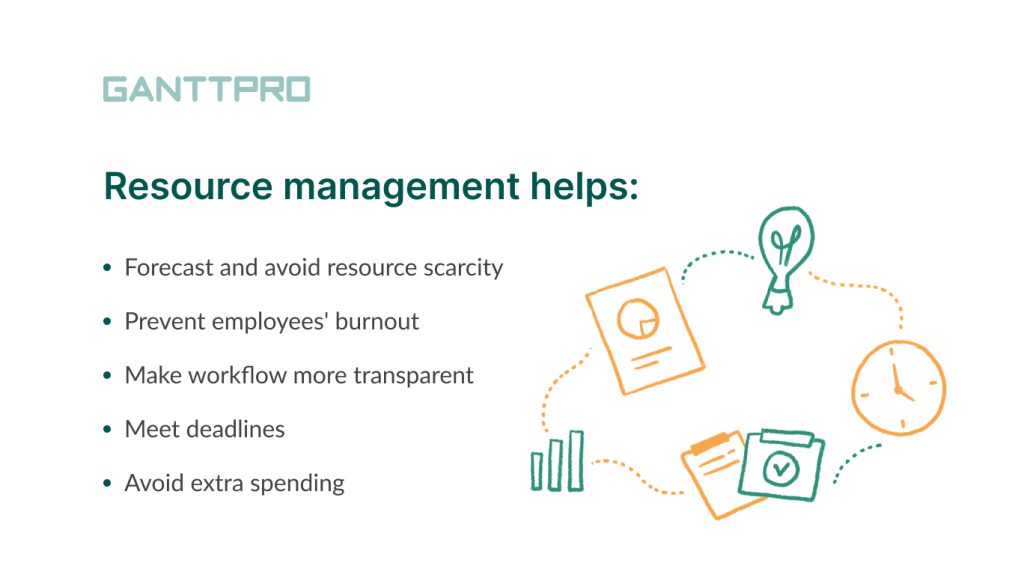
Now let’s identify the strong sides of resource allocation in project management.
Benefits of resource allocation in project management
Effective resource allocation is crucial for completing projects on time and within budget. It makes it an essential aspect of project management to be mastered by professionals.
This process has several benefits, which are mentioned below.

- Optimized utilization of resources. Proper resource allocation ensures that your project resource calendar works effectively and your assets don’t experience idle time and overallocation. It leads to budget savings and higher productivity.
- Improved project planning. Allocating resources in advance provides better planning, even if you deal with resource planning for multiple projects. It means that you can identify resource constraints early and make adjustments to your project timeline and scope accordingly.
- Advanced communication. Clear project management resource allocation facilitates communication among managers, team members, and all stakeholders. Everyone knows their roles and responsibilities. It reduces possible confusion and misunderstandings.
- Risk mitigation. Right allocation and resource scheduling help teams identify potential resource constraints or conflicts. It allows project managers to proactively address these issues and reduce project risks.
- Competent financial control. Efficient project management resource allocation helps to control costs by avoiding unnecessary overtime or resource duplication.
- Improved decision-making. This benefit allows project managers to make informed decisions about resource allocation based on project priorities, critical paths, and available assets.
- Increased flexibility. The process of resource allocation can be adjusted as project requirements change, allowing for adaptability in response to unforeseen circumstances.
Why is resource allocation in project management important?
The importance of resource allocation in project management is not a topic for long discussions, since most often, managers and teams clearly understand the full significance of this process. No doubt that it directly impacts project success, efficiency, and cost control.
In addition to the above-mentioned benefits of the process, there are several other essential strengths and reasons why project management resource allocation is really important.
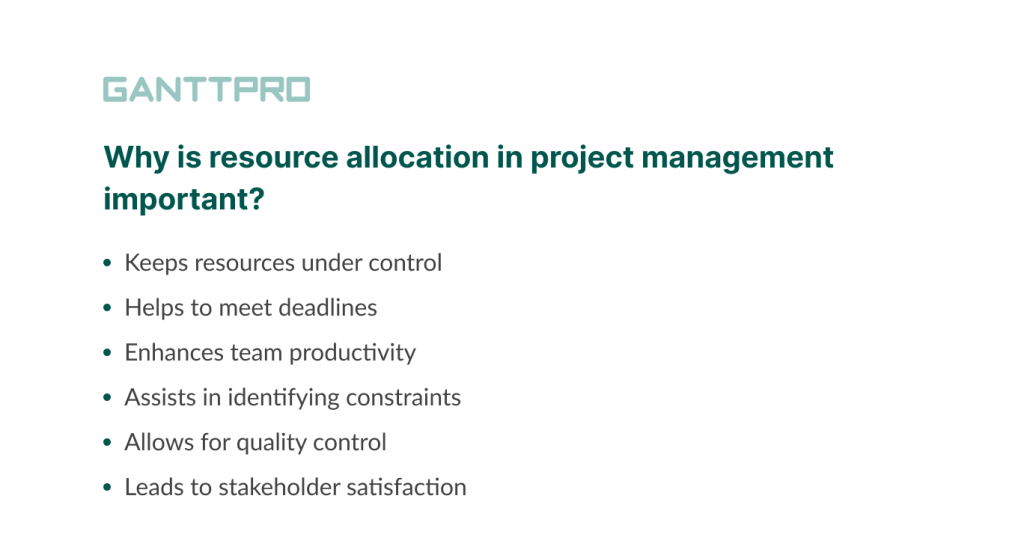
- Keeps resources under control. Proper allocation of all possible project resources ensures that they are used efficiently. This order and their complete control help in minimizing waste and optimizing the project’s cost-effectiveness.
- Helps to meet deadlines. Resource allocation helps in assigning tasks and responsibilities to team members based on their skills and availability. It ensures that project milestones and deadlines are met on time.
- Enhances team productivity. When resources are allocated properly, team members can focus on their tasks without interruptions. It logically leads to high-quality deliverables and enhanced productivity.
- Assists in identifying constraints. By allocating resources effectively, project managers can determine potential resource constraints or bottlenecks early.
- Allows for quality control. Allocating the right resources with the necessary expertise ensures that your project is executed with the required quality standards. It logically reduces the likelihood of errors and rework.
- Leads to stakeholder satisfaction. Meeting project goals and deadlines through effective resource allocation in project planning and scheduling accelerate stakeholder satisfaction. It can be important for maintaining client relationships and organizational reputation.
Resource allocation methods
There are powerful resource allocation methods that help business owners, managers, and teams distribute and assign required resources, such as personnel, equipment, materials, time, and budget in a systematic and effective manner.
Professional resource allocation in project management can be accomplished through the following methods:
- Critical path method (CPM). This approach helps to identify and schedule the most critical tasks in a project to manage timelines efficiently.
- Critical chain method (CCM). The method optimizes resource allocation while considering task dependencies to prevent project delays. It focuses on allocating resources based on the critical chain of a project, which is the longest chain of interdependent tasks.
- Resource leveling. This method aims at evenly distributing available resources over the project timeline. It ensures a more consistent utilization of resources and minimizes fluctuations in workload.
- Resource smoothing. This method, on the other hand, focuses on adjusting a project schedule to balance resource demand and supply while keeping the project duration constant. It aims at minimizing resource overallocations without extending the project’s overall timeline.
- Earned value management (EVM). This method helps to comprehensively monitor and evaluate project progress, encompassing schedule, scope, and resource measurements. EVM offers a precise overview of project performance by comparing the value of completed work to the planned budget.
- Expert judgment. This approach is about utilizing the expertise of industry specialists to determine project resource needs and allocation, especially in cases with limited data or unique projects.
- Historical data analysis. This approach means examining data from past projects to gauge necessary resources and allocation, suitable for projects with a history of similar endeavors.
- Prioritization matrix. The method is based on a special matrix that assesses and ranks various tasks or projects based on specific criteria. It helps organizations determine which activities should receive priority based on factors such as importance, urgency, and available resources.
What are the challenges of resource allocation?
A good manager should be able to adapt to market changes to achieve better results. Resource allocation is one of the essential parts of PM, and at the same time, it is the hardest thing to optimize and automate.
Many professionals are engaged in several projects and sometimes play several roles in them. This fact makes management processes even more complex.
Below we describe some common resource allocation challenges.
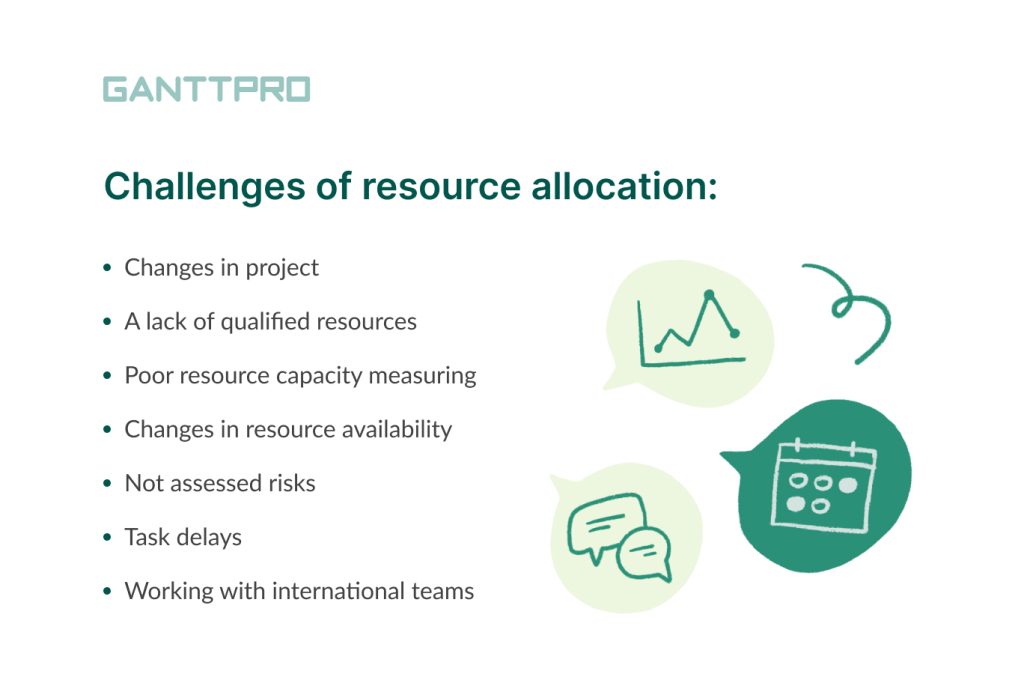
- Changes in a project. Every manager should keep in mind that changes can occur at every moment of project delivery. So, it is always better to have a flexible resource allocation plan.
- Lack of qualified resources. It is important to ensure your employees possess the required skills to work on the project and in a company in general. Otherwise, the allocation procedure will become just a waste of time.
- Poor capacity planning and measuring. Before starting work, you should define the capacity of your resources. In other words, determine available resources (no matter human or not) to deliver your project within budget and on time.
- Changes in resource availability. Resource allocation is not a static process. It will be helpful if you don’t forget about sick days, delivery delays, etc., which can cause scenario changes.
- Not assessed risks. Here we are talking about not only human resources but about all types of them that were listed earlier. A manager should assess every possible risk: from extra costs and unforeseen events to equipment change and the learning process of new software.
- Task delays. Tasks can be connected with dependencies. So, if one step in the project is delayed, it can cause a domino effect and affect the timing of other tasks.
- Working with international teams/remotely. If you work in a remote or distributed team, you have probably faced difficulties in workflow because of colleagues’ different time zones and locations. A good manager should always predict such things to avoid miscommunications and delays.
Now is the time to consider specific steps necessary for the proper organization of resources within a project.
How to allocate resources with the help of professional software
After all that you have learned, the question arises: how to do resource allocation in project management properly? And how to make a workflow smoother and get more successful results?
Below, we describe the consistent steps that will help align your workload and improve your workflow. All of these steps can be available with the help of a robust online tool. It would be great if this resource management tool provided a Gantt chart view – a handy timeline that allows for overseeing the whole workflow picture.
One of the professional examples of such software is GanttPRO.
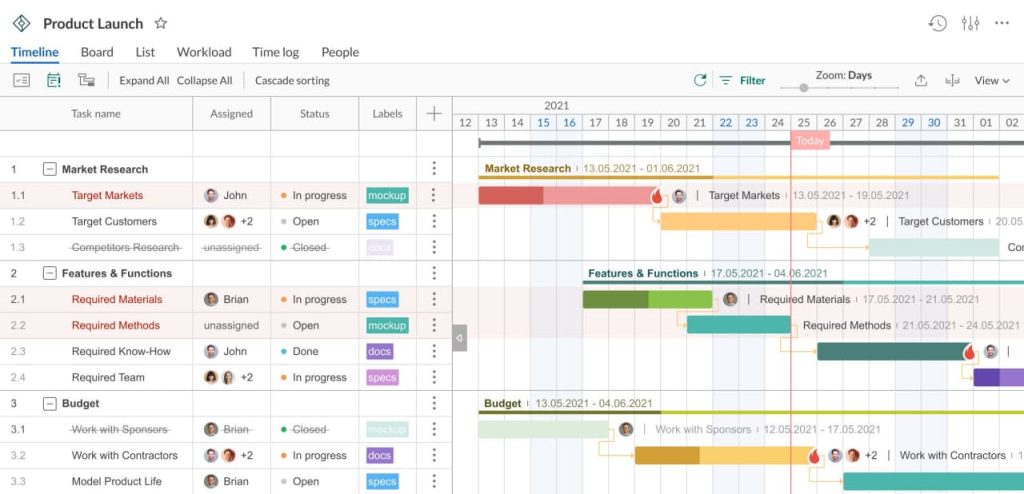
The Gantt chart maker comes with robust project management features, enabling teams to achieve successful outcomes. It is used across various industries, including software development, complex construction projects, events, marketing, and many other fields.
Professionals utilize GanttPRO for project management, task scheduling, event tracking, deadline management, collaboration, as well as advanced resource planning.
Here are the thoughts of George Rossle, a production manager at A+ Construction Pro:
For us, GanttPRO is a basic tool for planning and management. We invite our colleagues to projects as well as create resources. We use the software for deadline management and time tracking, file sharing, and smart scheduling.
Once you start working with GanttPRO, you will feel confident and professionally prepared, because the functionality of the tool is intuitive and convenient for most users.
In case you want to start working with GanttPRO as quickly as possible, there are pre-made Gantt chart templates for use in many industries and areas.
Project teams rely on GanttPRO to plan projects, manage tasks, and allocate resources effectively, recognizing it as reliable resource management software.
So, let’s explore how to allocate resources in project management step by step.
- Align on the scope of your project.
- Divide your project into tasks and subtasks.
- Invite project participants and create virtual resources.
- Assign tasks.
- Remember about deadlines.
- Manage workload.
1. Align on the scope of your project
Do you remember the quote “Well begun is half done” by Aristotle? This phrase actually stands true to different aspects of business, including project management resource allocation.
Thoroughly understanding the scope of your project will help you build a robust foundation for further resource allocation.
To scope a new project, you should clearly realize how complex your project will be and how many resources you will need to accomplish it with success. Understanding the project’s goals, deadlines, and deliverables is rather important. It will help your team get a sense of your project needs to hit all objectives on time and within budget.
The proper definition of a project scope also helps avoid situations when deliverables exceed the pre-set project scope.
2. Divide your project into tasks and subtasks
The successful strategy of resource allocation in project management ensures that all your resources are managed and allocated on the task level.
Hence, the next logical step is dividing your project into smaller manageable tasks. Each task should have a fixed start and end date, due date, and budget.
To systemize your tasks in GanttPRO, you can use a work breakdown structure (WBS). After that, you can easily determine task dependencies and mark project milestones within your timeline. It can be easily performed with the help of drag-and-drop.
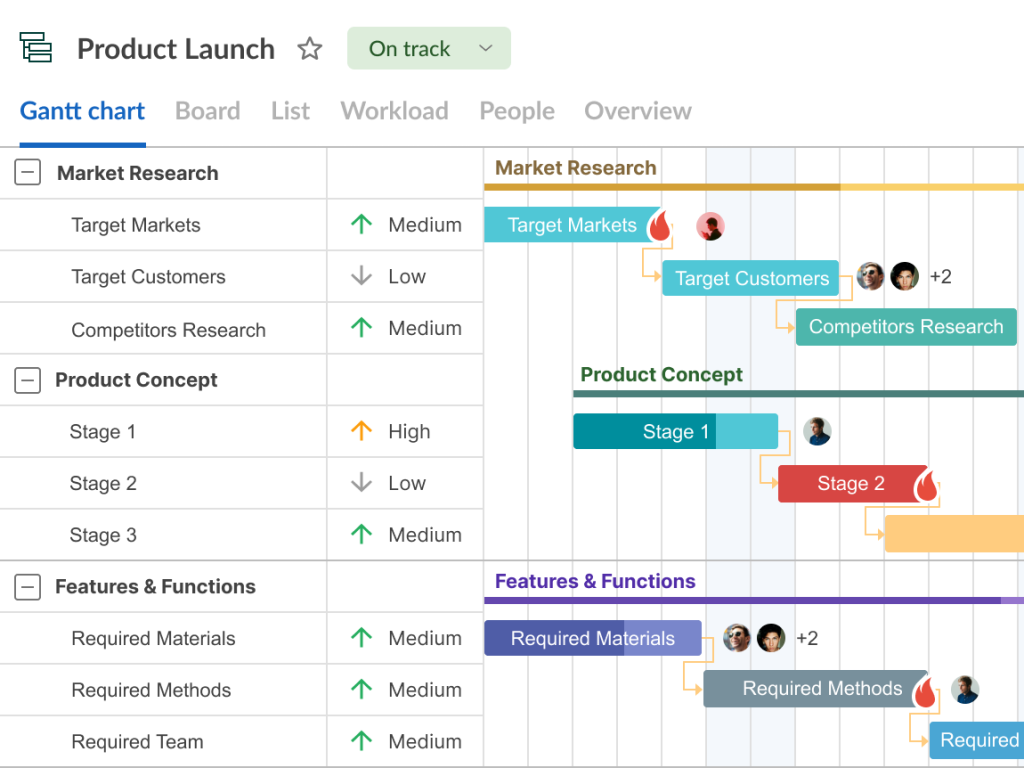
3. Invite project participants and create virtual resources
Having everything and everyone in one place is an extremely convenient decision. With the robust PM software, you can easily collaborate with your teammates and organize both virtual and labor resources.
In GanttPRO, you can easily invite your team members and set roles, costs, and calendars for them. Creating virtual resources and managing them is just as easy as with people. You can define cost for all resources per hour, per item, or just cost.
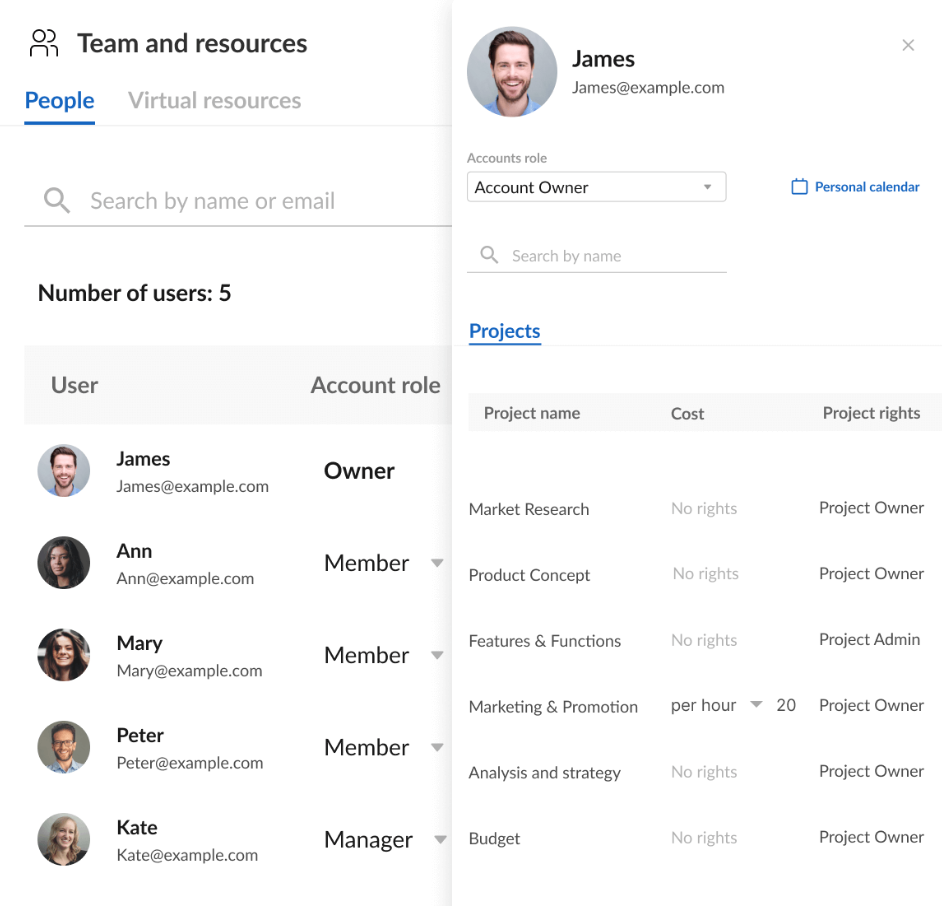
4. Assign tasks
Once your tasks are placed on a timeline with all dependencies and milestones, you can distribute them among your team members.
Assigning tasks to responsible teammates in GanttPRO takes a matter of seconds. With a handy Gantt chart with resource allocation the picture of your project becomes clearer.
Assign one or more resources to every task to be sure everything is going to be completed.
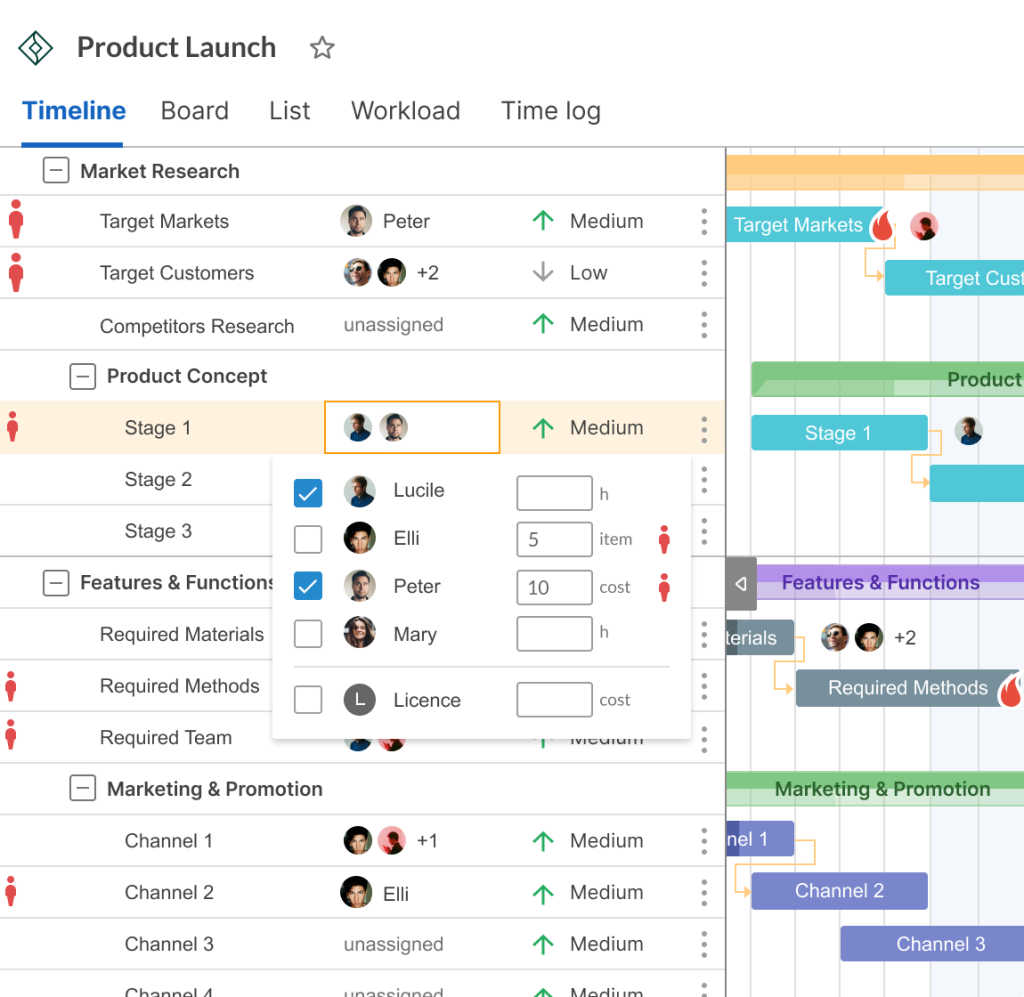
Don’t also forget to identify the roles and responsibilities of all the people involved in your project.
If you want to provide your teammates with special rights to view data, you can easily do it in GanttPRO, as it allows for working with different account roles and project rights.
5. Remember about deadlines
It is crucial to control the timing of each task to complete projects successfully. Even one missed deadline can negatively affect the work of colleagues and the final result.
With resource scheduling tools, you can easily:
- Control the timing of each task and the entire project.
- Meet deadlines promptly.
- Track how much time your employees spend on completing their tasks.
These features will help you efficiently distribute work among employees and stay within time frames.

6. Manage workload
Monitoring resource workloads and reallocating them are essential solutions to keep plans within the budget.
Companies that regularly check and reevaluate their resource allocation have higher chances to create more value for their projects and, eventually, deliver higher returns. Their employees won’t experience burnout or boredom.
In GanttPRO, you can keep track of resource workloads in one place.
This is highly appreciated by Allan Cid, an experienced project manager, who admits:
I like that I can create a workload for my team. This way, I can measure whether I give too much workload to a worker on a project or not. GanttPRO sorts out the hours used in different projects. So, if I have a worker working on Project A, Project B, and Project C, I can see what their workload looks like for a week or a day and reassign tasks if needed. That’s great.
An online Gantt chart automatically calculates the workload of each employee and makes it possible to redistribute tasks between team members if needed.
With the drag-and-drop simplicity, it is a matter of seconds to reallocate any resource from your project. This helps when resources are overloaded or underutilized.

All of the steps listed are basic but they can be easily supplemented with additional ones.
Now it’s time to look at these processes using a practical example.
Resource allocation in project management example
Let’s say, our example of resource allocation in project management is related to creating a new game portal. The goal of this portal is to provide a centralized hub for accessing a variety of video games, allowing users to get a range of gaming-related services, such as game downloads, reviews, news, and community forums.
In this project management resource allocation case, we’re tasked to develop a portal from scratch with a little assistance from a design agency.
Below are the specific steps and what our resource allocation plan in GanttPRO may look like.
1. Defining a project scope
The project scope is pretty clear here, and we have a detailed project plan with granularity to the tasks that need to be completed.
A new gaming portal will contain a hub for accessing 100+ video games and attract over 80K followers from the community in Q1-Q2.
2. Creating tasks and subtasks
A game portal development project will include parental tasks and smaller subtasks. Here they are:
- Concept and planning (gaming communities research, popular games analysis, unique features).
- Design (interface, layout, UI elements, interactive blocks).
- Content creation (news articles, user reviews, community videos).
- Development (databases, server setup, integrations, authentication, user registration form).
- Testing (1st testing stage, bug fixes, 2nd testing stage).
- Launch (beta, portal deployment, announcement).
- Marketing and promotion (PR, news, social media, advertising, conference).
- Maintenance and updates (monitoring sessions, maintaining campaigns).
3. Understanding resources
The project budget is $18K. It involves the participation of the following managers and departments:
- Project manager (Sam).
- Product manager (Ashley).
- Community manager (Peter).
- Engineering, front-end and back-end (Ben, Tomas, Luck).
- Design (Clara, Paul, Vera, Anthony).
- QA (Alex, Debby).
- Marketing (Jim, Francheska, Billy).
- Agency assistance (Jeremy).
Our goal here is to define the most relevant experts and check whether they have enough capacity to join the initiative.
It’s crucial to take some time to list the things that can go wrong with our allocated resources and see what steps we can take to address those issues and make the allocation process future-proof in advance.
4. Task assigning
The distribution of tasks in our project can occur as follows:
- The product manager in cooperation with the project manager will be responsible for the concept of the future portal and planning the key stages of its development.
- Designers and the agency staff will work on all the issues related to the portal design.
- Content marketing specialists will provide high-quality content for the portal.
- Developers will work on front-end and back-end tasks and prepare the portal for its successful launch.
- The QA team will do their best to test the platform and identify possible bugs.
- The community manager in cooperation with marketers will promote the portal and make it adorable for the community.
We can set values and cost per hour for human resources and let GanttPRO calculate the cost of the entire project.
5. Deadlines
We should remember that we need to track how much time our team members spend on completing their tasks. Controlling the timing of each task and setting deadlines to complete the portal successfully is very important.

6. Workload management
Now it’s important to review and revise resource allocation to achieve better project value and prevent employee burnout.
In GanttPRO, we can conveniently manage resource workload in a corresponding space. It automatically counts employee workloads and allows for quick task redistribution among team members using friendly drag & drop functionality.

Seems like it is all we wanted to tell you about such an important process as resource allocation in project management.
Make resource allocation in project management a strength for your team and the entire business
By following the steps outlined for effective resource allocation in project management and keeping our example in mind, you can prepare your team for optimal performance and instill confidence in achieving project goals.
While implementing these steps may appear daunting, the advantages of allocation are substantial, particularly when leveraging robust technologies.
To enhance your project management resource allocation expertise, explore professional tools like GanttPRO. It will identify resource overallocation and enable timely adjustments, ensuring your team remains on course and well-balanced.

Resource allocation and management software
Complete projects on time, manage workload, and communicate with a team.
Sign up for free


helpful